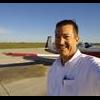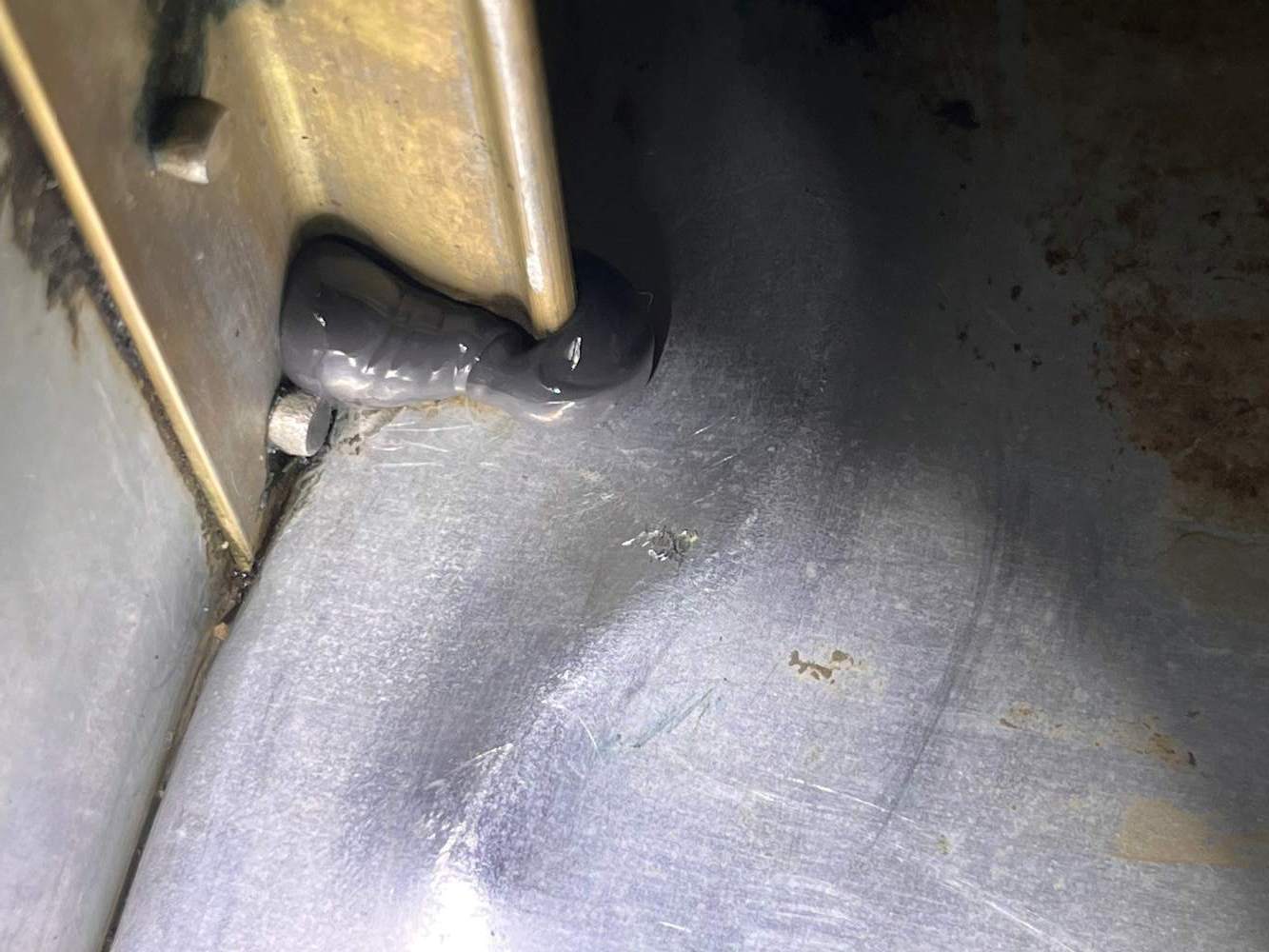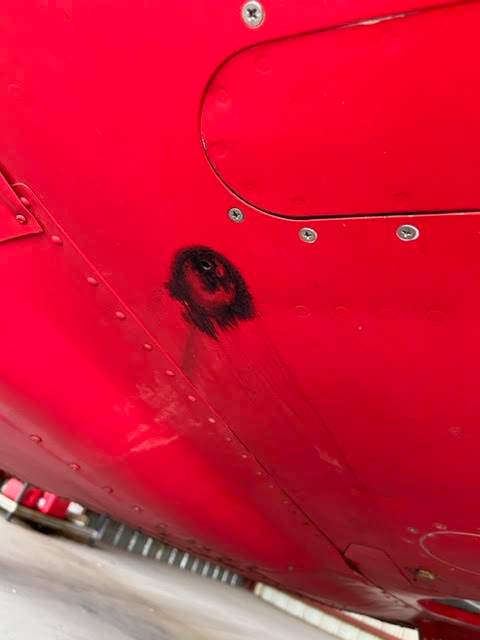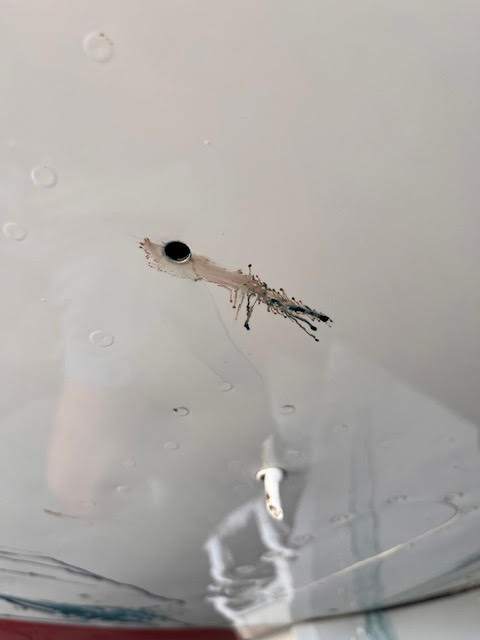-
Posts
96 -
Joined
-
Last visited
Content Type
Profiles
Forums
Blogs
Gallery
Downloads
Media Demo
Events
Everything posted by Bill_Pyles
-
One of the mechanics did observe under the panel and did not detect any resistance or interference that would have caused the problem. Thanks, though. To "un-bind" the control wheel, I turn it slowly back to the right, change elevator position and turn it slowly to the left and it operates smoothly. There is something about moving the wheel quickly to the left that causes the singularity.
-
Yes, by binding I refer to a full stop bind. I did not try to force the the wheel to turn past the position where the wheel refused to turn. It's interesting that the full stop bind is dependent on the speed at which the wheel is turned AND the turn must be initiated from the full turn of the wheel to the right. If you just casually turn the wheel right and left without going all the way to the right against the stop, it doesn't bind. I did find the service bulletins that were mentioned by takair---thanks.
-
The plane was in the shop for the annual inspection for five months and I do not know specifically what was "touched/removed/adjusted" during the inspection or while the plane was sitting in the shop. I don't know what inspections or adjustments or lubrication the Mooney maintenance manual stipulates during a routine annual inspection.
-
I live in the Phoenix area of Arizona and I just got the keys and logbooks back for my 1980 M20J following the annual inspection. The plane has not been flown since the annual was completed. by a shop here in AZ. I went to the field today just to make sure the engine would start (not to fly it) since the battery is 2+ years old and the plane has not been started for at least a couple of months. Engine started normally. I performed a controls check as if I planned to fly the plane and found that at any elevator position, if I turned the control wheel fully to the right against the stop and then briskly turned the control wheel to the left, the control wheel would almost immediately stop after just a few degrees of rotation as if a control rod was binding up. If I neutralized the control wheel and then turned the wheel to full right and then slowly turned the wheel to the left, the control would not bind. I have been the sole owner of this plane for over 12 years and has never exhibited the aberration described. Performing the test by starting with full left aileron did not produce the binding, but the problem is 100% repeatable going from full right, rapidly to full left. I got three mechanics from the maintenance shop to look at the plane and they were also able to reproduce the problem, but none of them knew what the issue is, so the plane will have to be re-inspected by removing under wing access panels and the belly panel. The plane was in the shop for many months and there was nothing big that was wrong with the plane, and no long lead time items that were replaced (just a seat belt and an LED strobe). Has anyone experienced such an issue with the controls?
-

Leaking fuel tank. How much is too much?
Bill_Pyles replied to Bill_Pyles's topic in Modern Mooney Discussion
Eric: Expert might be a stretch, (Rich is the expert) but I learned a few things and wouldn't mind sharing what I learned. Niko: As far as how long the repair took, I didn't keep an exact record, but I estimate the actual work on the plane was around 10-12 hrs although I spent a number of hours corresponding with folks, researching and ordering (or borrowing) the scrapers and sealants (and special tools like the skin wedge and sealant applicator) and watching Youtube videos that related to the repair (there weren't many videos), so the actual work was less than half the total time I spent researching and agonizing over the possibility of flying the plane somewhere to have a professional do the job. -

Leaking fuel tank. How much is too much?
Bill_Pyles replied to Bill_Pyles's topic in Modern Mooney Discussion
I am pleased to report that, with the assistance and final approval of Rich, AKA N201MKTurbo, who is an A&P, I was able to detect and repair the leak in my left tank using the Mooney maintenance manual procedure. The basic steps were: 1) Drain the fuel from the tank 2) Remove the three fuel tank access panels. 3) Fabricate clear Lexan windows, for the access holes and one for the filler hole. 4) Position flashlights and mirrors inside the tank to enable a view of every nook and cranny and seam. 5) Squirt soap bubble solution along the seams inside the tank near the suspected leak location. 6) Install the Lexan windows with blue painters' masking tape. 7) Insert vacuum hose into a cutout in one of the Lexan panels and look for bubbles where outside air is being sucked through the leak. (I found one significant leak where the stringer passes through the outer tank wall) 8) Make note of the leak location and check the rest of the tank for leaks. (There was just the one leak). 9) Remove Lexan windows and completely remove old sealant from the leak area using MEK and plastic scrapers---no metal scrapers. This took a while. 10) Remove old sealant from the access panels and area inside the wing tank where the panels are mounted. 11) Thoroughly clean the tank with water and cloth that does not shed lint. 11) Using the Mooney Maintenance manual-prescribed sealants, I filled the leak area with filet sealant, brushable sealant and top coat. 12) Reinstall the access panels with panel sealant and new aircraft grade screws. 13) Fill both tanks with fuel and fly! 14) No leaking observed and depleted fuel is consistent with expected fuel burn rate. Thanks to EricJ for an early discussion and examination of the plane right after I noticed a leak, and thanks to Rich for guidance and encouragement throughout the repair project as well as assistance re-installing the access panels, which is easier with three hands. I had a great time working on the plane and it was one of those projects that I almost didn't want to end. "Almost" being the operative ;-) I am glad to be flying the plane again! -

Leaking fuel tank. How much is too much?
Bill_Pyles replied to Bill_Pyles's topic in Modern Mooney Discussion
Thanks everyone. Sounds like the tank is leaking into the dry part of the wing. For the past few years I have been going to Falcon Aviation Services at KFFZ and they are currently working with Southwest Airframe and Tank on another Mooney tank leak, and Falcon will speak to Southwest about my plane. -

Leaking fuel tank. How much is too much?
Bill_Pyles replied to Bill_Pyles's topic in Modern Mooney Discussion
-
The left tank on my Mooney N239SW has developed leaks around two access panels on the underside of the left wing. The tanks were re-sealed 11 years ago by Weep No More which everyone says is the gold standard for tank repair but I am in AZ and they are in MN. I flew the plane for two hours using only the right tank and the leakage rate for the left tank is about a gallon per hour while in flight. However, while the plane is parked in my hangar, the leak rate for the left tank is about 6 gallons per week. How does this leak rate compare with your experience? Do leaks tend to get worse? Has anyone used Southwest Airframe and Tank Services to fix a leaky fuel tank on a Mooney? Can anyone recommend a tank repair expert in AZ? Thanks, Bill KDVT 408-717-2771
-

Traffic Display on GNS430W with Dual G5 and GTX-345
Bill_Pyles replied to glenv6's topic in Avionics/Panel Discussion
I have a 530W and GTX345 out/in and Century 21 AP in my M20J. (I know I will eventually have to upgrade the AP). I want to get dual G5s. 1) Will I get traffic on the 530W or have the same problem described above with the 430W? 2) Will I still need the vacuum pump for any reason? -
Thanks to all of you. Based on the information you've shared (and my own experience with car tires and racing tires) I will ask a mechanic to rotate the tires on the rims, hoping he/she won't object due to liability or fear. Attached are photos of my plane and tires in question. Obviously, I've flat-spotted the right one. --Bill
-
Mooney main landing gear is rigged such that the wheel/tire assembly has positive camber which causes the outside of the tire tread to wear faster than the inside. Is there any reason the tires cannot be rotated on the rims so as to extend the life of the tires? I realize some tires have a rotation direction and shouldn't be reversed, but if the tires can rotate either direction does anyone rotate their tires?
-
I recommend Paul Beck at Weep No More in Willmar, MN 320-295-1671. Had my M20J tanks sealed six years ago and they are still leak-proof. Worth every penny.
-
You may very well have a ground wire that is attached to something corroded or rusty, as I did. The rust increases the resistance and increased resistance shows up as a higher pressure indication.
-
Here's what happened yesterday: I flew the plane 30 miles from LVK to SCK where Top Gun is located. On this hop, both the stock gage and EI read normal, with the EI showing 82 PSI. We cut the filter apart after four hours of flying and it was pristine--not even carbon flecs. Turns out the transducer for the stock gage was mounted and grounded to one of the engine mount tubes. Whereas whoever did this did scrape most of the paint (or powder coat) off the tube, the tube had some rust on it and the x-ducer mount (just a thin metal strap) was not completely tightened on the tube. Since the gage is sensitive to the quality of the ground, we proved that increased resistance i.e. grounding through rust/paint caused the gage to occasionally read high due to the higher resistance. Joe at Top Gun (great guy) ran new ground wire to the firewall and he also re-grounded the transducer for the EI gage. I flew the plane back to DVT (in 3:35 due to a little push) and both gages performed flawlessly and with no weird deflections. When the oil temp got over about 205DF, the OP went to 77PSI. When I cooled the oil to 190, the OP when back up to 80-82. So...I learned something about my plane, I believe I now have two functioning oil pressure gages, and I have confidence that the seemingly high pressure reading was caused by nothing more than variable resistance due to a poorly installed grounding scheme for the stock oil pressure transducer. I should have taken photos for y'all.... Thanks everyone for chiming in. Bill
-
I don't have any answers, but I do have an experience to relate from yesterday, June 14. I have a 1980 M20J and I changed the oil and filter last Friday, and yesterday I flew from my home base, Phoenix DVT to LVK in northern CA, about a 4 hour flight. I cruised at 8500, 23 MP and 2460 RPM. On two occasions, the first occuring after an hour of flight and the second occuring at 2.5 hrs, I got a slow rise in oil pressure (indicated by the original analog gage) into the yellow. In both cases I reduced power and RPM and the oil pressure gradually returned to the middle of the green, where it usually runs. In neither case did the oil temperature rise with the supposed rise in oil pressure. I also have an EI gage but the oil pressure on reads either stupid numbers such as 0 PSI or 22 PSI, or it sometimes reads expected or normal values such as 75 or 80 PSI. In neither case where the analog gage indicated high pressure did the EI gage also indicated high pressure. The EI gage always either reads "normal" number steadily or it reads "stupid" numbers such as 0 or 6 or 17 PSI, erratically. I have spoken with Mark Roush at Top Gun and Don Maxwell and they both said I should cut the filter open to check for metal. Mark said the worst case scenario is a crank bearing has spun, blocking the oil feed holes and causing a pressure rise. I don't see how a bearing would spin so the holes are out of alignmenent and then re-align for an hour or more of flying. In reading Mooneyspace I see theories of the pressure relief valve sitcking, but I think it would be more likely to stick open than closed which would cause a drop in oil pressure. Since almost a year has passed since the last post in this thread, does anyone else have any theories or stories that may contribute to the body of knowledge on this topic? Bill
-

Where should my fuel pressure be?
Bill_Pyles replied to Heybluez's topic in Modern Mooney Discussion
My needle position looks the same as the one in your photo. I had Top Gun in Stockton, CA test the pressure in my J and they said my gage read abouot 2-3 needle widths low, and that my actual pressure was "normal." -

Loss of GPS navigation with G530W and other weirdness
Bill_Pyles replied to Bill_Pyles's topic in Modern Mooney Discussion
All, Thanks for the input. On the issue of the class Delta airspace "disappearance" from the #1 Nav page, all I had to do is click Ent twice and the Delta re-appears. -
I have an M20J that I keep at KDVT in Phoenix, but my question is not necessarily Mooney-specific. I keep the Jeppesen database up to date in my G530W, but everytime I fly over the Phoenix Class B airspace southbound over Squaw Peak I get a message the the GPS navigation is lost and to use another navigation source. The moving map ceases to function for a few miles and then comes alive again. I will occasionally ge the same message in other parts of AZ and CA, but I always get the message in the Phoenix Bravo. Anyone have an idea what causes this? The other G530W weirdness is I used to be able to see the class D airspace on Nav page one, but now I have to go to page two to see the Delta airspace. What is up with that? Any ideas would be appreciated.
-

looking for a mooney shop near Sedona AZ
Bill_Pyles replied to 231LV's topic in Modern Mooney Discussion
I moved to AZ from the bay area, but I take my M20J to Top Gun in KSCK (Stockton) and they do good work. -
I departed ABE last Sat with my brother who had never flown with me and and about 1000 feet AGL, the engine went rough and felt like it was going to shake itself loose, so I did all the usual stuff like switch tanks, full rich, mage check etc and of course the roughness continued, so I returned to the field and landed. I did a run-up and the #4 cylinder was cold for EGT and CHT so I cleaned out the injector and it ran fine and my trusting brother even went with me on the test flight, which was fine. Over the next three days I flew back to AZ with no issues. The annoying thing is that this is the third time I have had a clogged injector in about 18 months. One of the other times I aborted the take-off on the ground roll and the other time I had just gotten into the air, and landed on the runway when the engine started running roughly. I am wondering if there is something in the system that is occasionally shedding debris the clogs the injector. I had the tanks resealed by Weep No More three years ago when I bought the plane, so the tanks were thoroughly cleaned at that time. Usually the debris is black, but this time there was some yellowish stuff that might have been plastic. Any ideas?












